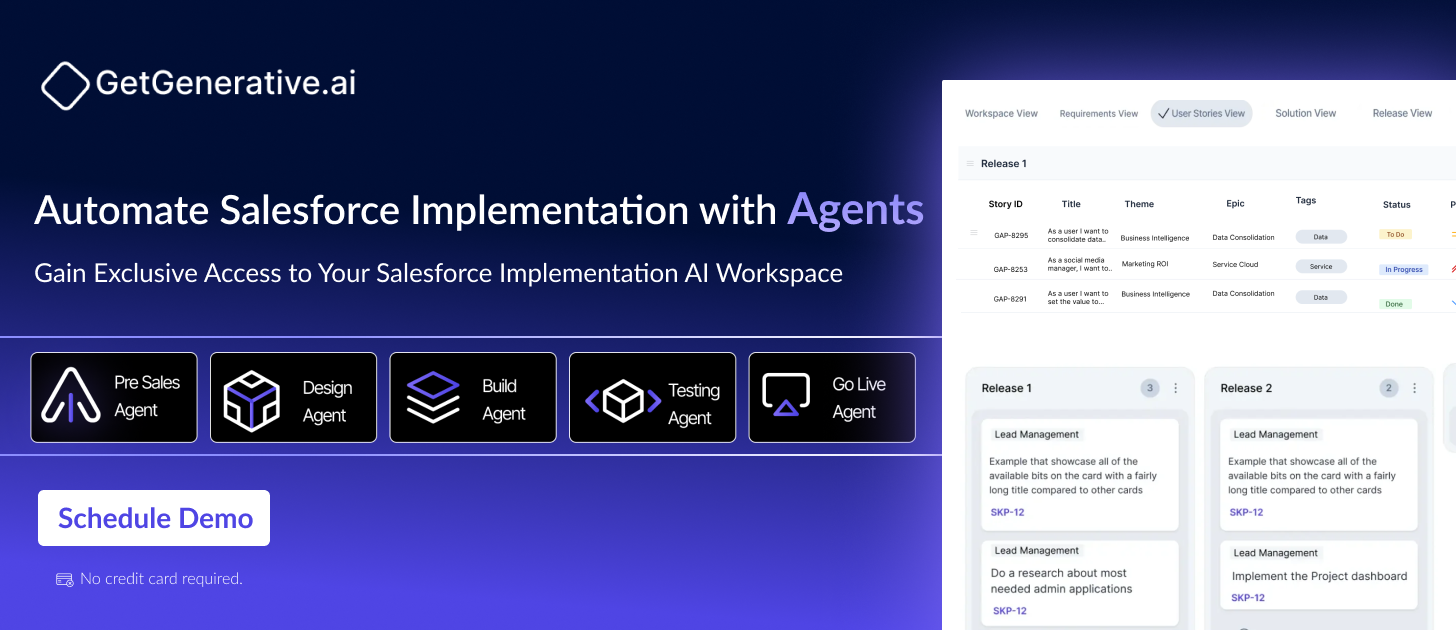How To Prepare a Request for Proposal (RFP): A Step-by-Step Guide
Navigating the complexities of vendor selection and project initiation can be daunting for any business. A well-crafted Request for Proposal (RFP) streamlines this process, ensuring you find the best fit for your project’s specific needs. According to industry reports, enterprise companies (5,001 to 10,000+ employees) win 46% of the RFPs they participate in, while mid-market companies (501 to 5,000 employees) aren’t far behind, securing a 45% win rate. This statistic underscores the effectiveness of well-prepared RFPs in securing the right partnerships.
In this guide, we’ll walk you through how to prepare an RFP, highlighting best practices and practical tips to make your RFP compelling and clear. With companies increasingly relying on external vendors to meet their strategic needs, Gartner reports that external spending can account for up to 50% of a company’s total expenses. This makes an effective RFP process critical for project success and financial efficiency.
What is an RFP?
An RFP (Request for Proposal) is a formal document used by organizations to describe a project’s specific needs and request detailed proposals from qualified vendors or service providers. It helps solicit bids that not only outline pricing but also explain how vendors will meet the project’s technical requirements, deadlines, and goals. To understand its history and role in procurement, you can explore more on the Wikipedia page for Request for Proposals.
Unlike an RFQ (Request for Quote) or RFI (Request for Information), an RFP typically asks vendors for more comprehensive details, such as their technical capabilities, past performance, and proposed methodologies. This approach ensures businesses can make informed decisions based on factors beyond price alone.
The RFP process includes details on project objectives, scope of work, timeline, and vendor selection criteria. Vendors responding to an RFP must present proposals addressing the buyer’s specific challenges, including pricing, deliverables, and timelines. By comparing proposals, businesses ensure they find the most compatible vendor with the right expertise.
Step-by-Step Guide to Prepare an RFP
1. Understand the Purpose of Your RFP
Before drafting the RFP, it’s essential to know exactly what you aim to achieve. Are you sourcing vendors for software development, marketing campaigns, or large-scale construction projects? Defining the purpose of the RFP document helps align your internal team and ensures you receive relevant responses from vendors.
Pro Tip: Speed up the RFP creation process by starting with a customizable template. Templates can help you avoid common mistakes and ensure consistency in how you present your requirements. For example, you can access a comprehensive Salesforce RFP Template to streamline the process.
2. Gather Internal Requirements
Engage key stakeholders, such as project managers, business analysts, and procurement teams, to identify key requirements, such as:
- Project objectives and goals
- Budget constraints
- Selection criteria (e.g., experience, cost, or past performance)
- Desired deliverables and timelines
Pro Tip: Clearly defining requirements early in the process ensures vendors can craft responses tailored to your exact needs.
3. Write a Clear, Concise Introduction
Your RFP should begin with a brief overview of your organization and the purpose of the project. Include:
- Company background
- The problem you’re looking to solve
- A high-level summary of the desired solution
Example:
“XYZ Corp is a leading tech company focused on developing smart home devices. We are issuing this RFP to seek proposals for building a mobile application to integrate with our IoT products.”
4. Define Project Details and Scope of Work
The Scope of Work (SOW) is the most critical part of the RFP. It outlines the tasks vendors must complete, deliverables, and key milestones. This section should be detailed and specific.
Include the following:
- Project phases: (e.g., discovery, implementation, testing)
- Milestones: Key delivery points to measure progress
- Requirements: Tools, technologies, and resources needed
5. Outline Budget and Constraints
Transparency is key. State your budget limitations and any constraints that may affect the project. Providing this information ensures that only vendors capable of working within the set limits submit proposals.
Example:
“The total project budget is capped at $200,000, with completion required within 12 months.”
6. Detail Your Selection Criteria
Listing clear evaluation criteria simplifies the review process and ensures you select the most qualified vendor. Common factors include:
- Cost-effectiveness
- Technical expertise
- Industry experience
- Innovation and creativity
- Post-project support options
Assign weights or scoring to these factors if needed, ensuring that all stakeholders understand how decisions will be made.
7. Specify Submission Guidelines
To ensure consistency, provide vendors with submission instructions:
- Proposal format and required sections
- Deadline for submission
- Contact person for questions or clarifications
- Submission method (e.g., email or online portal)
Clearly defined submission guidelines prevent confusion and facilitate side-by-side comparison of proposals.
8. Review and Finalize the RFP
Before sending the RFP to potential vendors, review it thoroughly to ensure all relevant details are included. Double-check for:
- Accuracy in requirements
- Consistency across all sections
- Proper formatting and grammar
Tip: Have key team members review the document for clarity and completeness.
Benefits of an RFP
An RFP (Request for Proposal) is more than just a procurement document—it’s a strategic mechanism designed to help businesses select the most suitable vendors while optimizing project outcomes. Let’s explore the key benefits that make RFPs an essential component of successful project management:
1. Competitive Pricing
One of the core benefits of issuing an RFP is its ability to foster competitive pricing. By opening the bidding process to multiple vendors, businesses can compare costs and negotiate deals that maximize value. Vendors, in turn, are encouraged to submit cost-effective proposals without compromising on quality or deliverables, knowing that they are competing for the contract.
Example: For large-scale infrastructure projects, competitive pricing through RFPs can save organizations millions of dollars, as vendors compete to offer the most efficient solutions within budget constraints.
Pro Tip: Ensure your RFP specifies both pricing requirements and quality benchmarks to achieve a balance between affordability and performance.
2. Quality Assurance
RFPs ensure that only qualified vendors with the necessary experience, expertise, and resources submit proposals. By clearly defining requirements—such as technical capabilities, performance metrics, and previous project experience—the organization can filter out unqualified vendors and focus on those who meet or exceed the project’s standards.
This approach prevents costly errors and ensures high-quality project outcomes, particularly in industries like IT, construction, and manufacturing, where precision and reliability are critical.
Example: An RFP for software development can specify requirements like agile development experience, adherence to coding standards, and security compliance, ensuring that vendors deliver high-performing, secure solutions.
3. Transparency
A well-structured RFP process promotes transparency by documenting every step of the selection process. This is particularly important in government and public sector projects where fairness, compliance, and auditability are essential. Detailed evaluation criteria, clear submission requirements, and documented decisions ensure that all stakeholders understand why a particular vendor was chosen.
Why It Matters: Transparency reduces the likelihood of disputes or legal challenges from vendors, as the process remains open and fair.
Example: In public sector projects, transparency ensures that taxpayer funds are spent responsibly by selecting vendors based on merit rather than favoritism.
4. Minimized Risk
RFPs mitigate risks by setting clear expectations for vendors. This includes outlining the project scope, deliverables, deadlines, and budget constraints. By addressing potential challenges and contingencies upfront, businesses reduce the likelihood of delays, cost overruns, or project failures.
Well-defined requirements also help identify risks during the evaluation phase, allowing organizations to choose vendors who have experience managing similar challenges.
Real-World Example: According to Economic Times, India’s government issued an RFP for local language AI foundation models with specific benchmarks to ensure high data accuracy and mitigate risks related to handling multilingual datasets. This highlights how proper requirement setting in the RFP can safeguard large-scale deployments.
5. Flexibility and Customization
RFPs are highly customizable and can be tailored to the specific needs of a project. Whether you’re sourcing vendors for a multi-year infrastructure project or a short-term software development engagement, the RFP allows businesses to define the scope, timeline, budget, and deliverables based on their unique requirements. This flexibility ensures that the organization can adapt the RFP to suit projects of varying complexity.
6. Vendor Accountability
By clearly defining performance metrics, deliverables, and milestones, an RFP holds vendors accountable for meeting agreed-upon standards. Vendors understand that failure to deliver on specified requirements could lead to penalties, contract termination, or loss of future business opportunities.
Example: If a vendor misses key milestones in a construction project, financial penalties may apply based on terms outlined in the RFP, protecting the organization from financial losses.
7. Collaboration and Innovation
RFPs not only help select the right vendor but also foster innovation by inviting vendors to propose creative solutions to complex problems. Businesses often discover better, more efficient ways to achieve project goals through vendor recommendations. Collaborative RFP processes encourage vendors to think beyond standard solutions and offer customized approaches that drive innovation.
Case Study: A large technology company issued an RFP for AI-based customer support solutions, allowing vendors to propose advanced natural language processing models and chatbot systems. This collaborative approach resulted in a solution that improved customer response times by 40%.
Common Mistakes to Avoid When Preparing an RFP
Creating a well-structured and effective Request for Proposal (RFP) is critical to ensuring that your organization receives high-quality responses from qualified vendors. However, common mistakes during the preparation phase can derail the process, leading to subpar responses, delays, or project failure. Here’s a breakdown of key mistakes to avoid and how to address them effectively:
1. Vague or Incomplete Requirements
One of the most common mistakes when drafting an RFP is failing to provide clear and specific requirements. When the scope, deliverables, or project objectives are ambiguous, vendors are left guessing what your organization truly needs. As a result, you may receive generic proposals that don’t fully address your business goals, leading to confusion during evaluation or project implementation.
How to Avoid It:
Clearly define project objectives, expected outcomes, scope of work, milestones, and deliverables. Use detailed descriptions, examples, and even diagrams where applicable to avoid misinterpretation.
Pro Tip: Include a section for assumptions and dependencies to clarify any factors that could impact the project.
2. Overly Long or Unrealistic Timelines
Another common pitfall is setting timelines that are either too long or too short. Unrealistically short deadlines can deter high-quality vendors from participating, as they may not have adequate time to craft thoughtful, customized proposals. Conversely, overly long timelines can result in vendors losing interest or delaying their responses, slowing down the procurement process.
How to Avoid It:
Provide a reasonable timeline for proposal submission, taking into account the complexity of the project and the information vendors need to gather. Be clear about deadlines for each phase, including submission, evaluation, and contract negotiation.
Pro Tip: Consult with internal stakeholders and industry experts to set a realistic timeline that balances speed and thoroughness.
3. Ignoring Vendor Questions
Failing to address vendor questions and clarifications during the RFP process can result in incomplete or off-target proposals. Vendors may submit responses based on assumptions, leading to misalignment between their proposed solutions and your actual requirements.
How to Avoid It:
Include a dedicated period for vendors to submit questions, and provide comprehensive answers within the specified timeframe. Consider publishing a FAQ document to ensure all vendors have access to the same clarifications.
Pro Tip: Create a centralized communication channel, such as an email thread or an RFP portal, to streamline and document all vendor interactions.
By avoiding these common mistakes and fostering clear communication, you can improve the quality of vendor responses and ultimately select the best partner for your project.
Conclusion: Maximize Success with a Well-Crafted RFP
Preparing a strong RFP involves more than simply listing requirements. It requires strategic planning, collaboration, and clarity. By defining project objectives, including relevant evaluation criteria, and ensuring vendor submissions meet your needs, you can drive better project outcomes and minimize risks.
Looking to optimize your RFP preparation? Sign up for GetGenerative.ai to leverage AI-driven tools that simplify proposal generation, streamline collaboration, and ensure your RFPs win the right vendors.
Start now to experience smoother and more successful vendor selection processes.
Frequently Asked Questions (FAQs)
1. What is an RFP?
An RFP (Request for Proposal) is a document that outlines a project’s requirements and asks vendors to submit proposals for completing the work.
2. When should I use an RFP instead of an RFI?
Use an RFP when you know your project needs and are ready to receive bids. You can also use an RFI to gather information about vendor capabilities before making decisions.
3. How detailed should the project scope be in an RFP?
The project scope should be detailed enough to give vendors a clear understanding of the tasks, deliverables, and expectations without being overly complex.
4. What should be included in the selection criteria?
Criteria may include vendor experience, quality of previous work, pricing, ability to meet deadlines, and specific project requirements.
5. What is the best way to format an RFP?
An RFP should be clear and scannable, using headings, bullet points, and concise language to outline requirements and instructions effectively.




